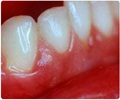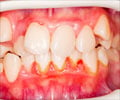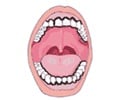Hominids used toothpicks to mitigate pain caused by oral diseases such as inflammation of the gums, a new research based on the Cova Forada Neanderthal fossil has shown.

The study was aimed to show the correlation between the use of toothpicks and an attempt to alleviate sore gums in a Neanderthal maxilla recovered from the archaeological site of Cova Forada.
The material studied consists of three teeth present in situ in the articulated right and left adult maxilla.
The maxilla showed evidence of periodontal disease and heavy dental wear, although it lacks other pathologies such as dental decay or abscesses.
The heavily worn teeth in the specimen are evidenced by the loss of the majority of the dental crown and, on the occlusal surface, by large areas of exposed dentine surrounded by a thin rim of remnant enamel.
The occlusal surfaces show pitting, scratching and enamel chipping of antemortem origin, indicating the intense use of the teeth. The extreme and heavy occlusal load on the teeth throughout the lifetime of this individual resulted in this type of dental wear.
Advertisement
Source-ANI











